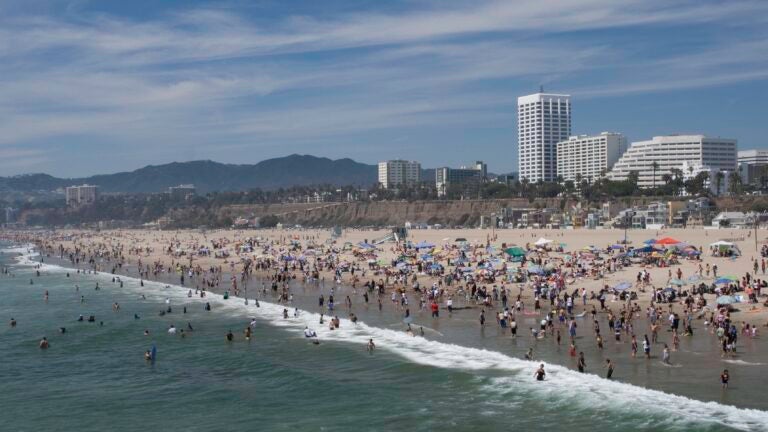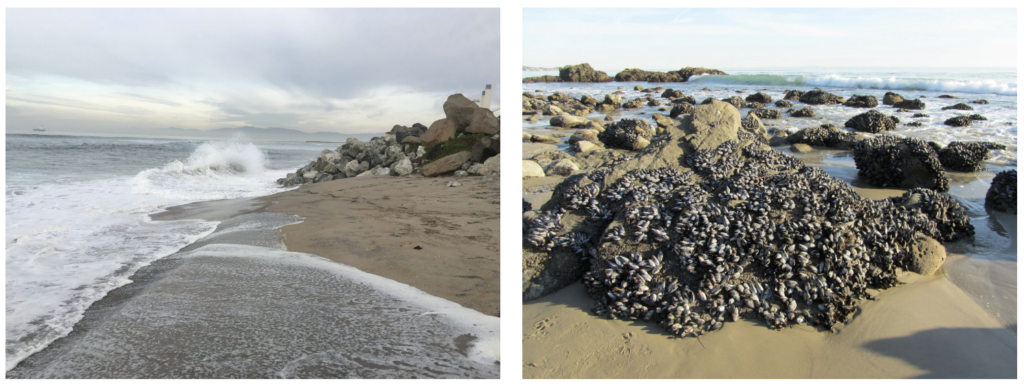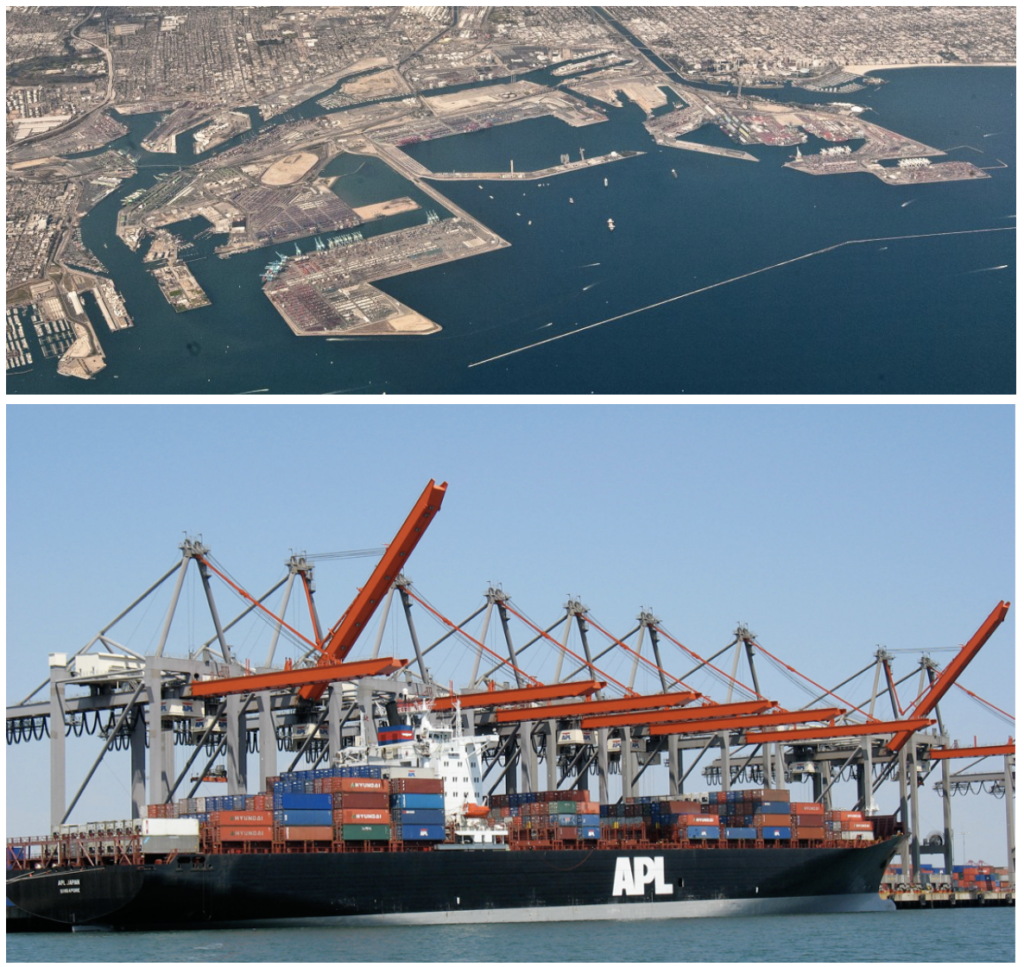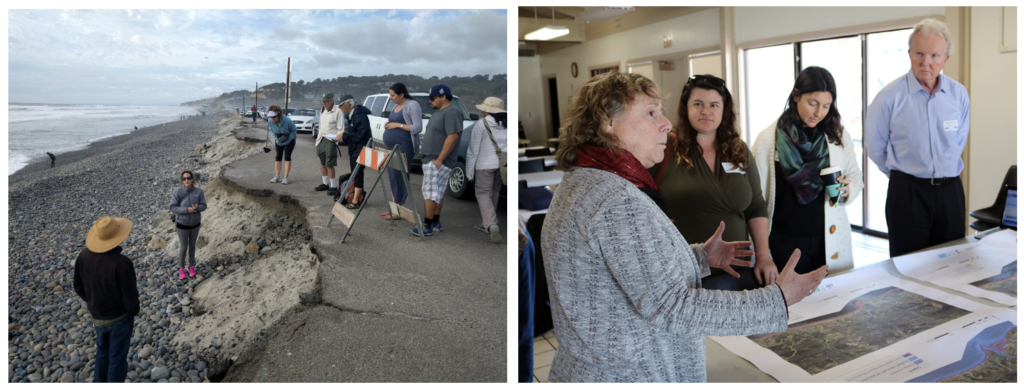
An Ocean for All
On its 50th anniversary, we explore the significance of USC Sea Grant’s programmatic theme, the Urban Ocean.
Humankind has a reciprocal relationship with the sea — we rely on the ocean for nourishment, resources, trade, commerce, and recreational activity, but in return, we must deal with seasonal storms, king tides, erosion, and now sea level rise. With 40% of Americans living near the coast, it’s in our best interest to make well-informed decisions on ocean and coastal policy.
Established by Congress in 1966, the National Oceanic and Atmospheric Administration’s National Sea Grant College Program was designed to protect and maintain coastal environments. Composed of 34 university-based programs across the nation in coastal and Great Lakes states, Puerto Rico, and Guam, Sea Grant provides an open forum for scientists, policymakers, educators, and students to learn about marine and coastal problems and discuss viable solutions for maximum resilience. One of the earliest programs established, University of Southern California (USC) Sea Grant’s existence is in itself something of an anomaly. Although it is the smaller of the two Sea Grant programs housed in California in terms of personnel and resources, USC Sea Grant serves one of the largest population centers nationally, a community of nearly 19 million sprawled across the coastal counties of Orange, Los Angeles, and Ventura and the two adjacent inland counties of San Bernardino and Riverside.
While many Sea Grant programs concentrate on issues relating to fisheries, aquaculture, and sustainable seafood, USC Sea Grant is, fittingly, primarily focused on solving problems of the Urban Ocean — a term that connotes a tangible and delicate balance between the natural environment and the built world. USC Sea Grant’s Executive Director, Phyllis Grifman, defines it as “what happens when you put millions of people right next to a fragile ecosystem. In the Los Angeles area, there are just under 19 million people who are associated in some way with the coast, either because they live fairly close to it or because they use it for recreation, or because they have received goods that come from shipping. I see it as the fabric of coastal environments.”
From the bountiful twin ports of Los Angeles and Long Beach to the narrow Pacific Coast Highway clinging to the coastal cliffs of Malibu, USC Sea Grant’s region of focus is defined by its diversity — varying coastal topography, sprawling coastal infrastructure, bustling maritime commerce, fluctuating socioeconomic statuses, and a veritable medley of cultural demographics. In a dense metropolitan landscape like Los Angeles, USC Sea Grant characterizes its urban ocean mission by focusing on issues such as water quality, coastal commerce, recreation, transportation of goods, ecosystem health, and expanding ocean literacy.
As an ancillary of the National Sea Grant Program, USC Sea Grant’s office sits at a particularly fascinating intersection of scientific research and public engagement. As Grifman puts it, “Sea Grant is a trusted, neutral broker of scientific research.” Sea Grant is not an advocacy organization for new legislation but instead acts as a facilitator between discovery and action. “We like to think about how we can work together so you can do the best science, and we can help you do the best science by getting your stakeholders involved,” USC Sea Grant’s Science, Research, and Policy Specialist, Dr. Amalia Almada explains. While the impacts of issues like aquatic invasive species and king tide events aren’t unique to the Southern California region, each municipality that USC Sea Grant interacts with is evaluated on a case-by-case basis, and staff work directly with local stakeholders and constituents to determine how the organization can best leverage its resources to create positive momentum in building resilience strategies.

Almada recently put the organization’s philosophy to the test with the construction of her California Stakeholder DDT Research Needs Workshop, held in July 2022. Focused on highlighting critical research needs and fostering future scientific collaboration on the issue, Almada (and colleagues at California Sea Grant) brought together over seventy-five participants from academic, nonprofit, and policy backgrounds for a two-day discussion on how to best address the 50-year legacy of DDT contamination at the bottom of the San Pedro Channel. As a neutral convener of experts and information channels, Almada notes Sea Grant’s ability to focus on generating deliverables after working with the community, “I think the unique thing about Sea Grant is the capacity to not just put on a workshop but to have targeted outcomes and deliverables. ”
Building partnerships and creating forums to engage scientific experts, public leaders, and members of the community serve to heighten awareness of ocean issues and increase individual and group accountability. Perhaps the Urban Ocean narrative is most immediately recognizable in neighborhoods like Malibu and Palos Verdes, where precariously-placed cliffside homes are ensconced by panoramic sea views. However, the core tenet of USC Sea Grant’s Urban Ocean initiative is to communicate that a healthy ocean should be important to us all. “If you live right next to the ocean, you’re likely to have a more direct relationship,” Grifman says. “But one of our goals is to teach people that we all have that relationship.”

Sea Grant’s Marine Transportation and Seaport Specialist, Dr. Jim Fawcett, believes that the entirety of the organization’s staff has a common intention. Despite individual areas of expertise, “All of us at Sea Grant are fundamentally educators,” he says. Fawcett, a longtime member of USC Sea Grant, is well-versed in the mechanics behind the two major seaports that Los Angeles County is home to, collectively the largest port complex in the nation. He offers a nuanced method of communicating his extensive knowledge of marine affairs to constituents located inland. “The Inland Empire and especially out from Ontario and further out is warehouse territory. So they are affected directly by what happens at the port because goods are moving their way to serve our huge urban population,” he explains.

Linda Chilton, USC Sea Grant’s Education Programs Manager, navigates this dilemma daily in her work. Communicating the essentiality of a global resource is no small feat, made even harder when interacting with inland communities who have been historically marginalized or have less access to the coast. “We do this by finding connections and providing relevance for individuals in ways that are meaningful,” she explains, referencing topics such as watersheds and, like Fawcett, goods that may arrive by container ship and be transported inland. Chilton works with scientists and educators to design, manage, and implement marine education programs, creating ocean experiences for students and teachers of all grade levels. When it comes to a sprawling and diverse population like the City of Los Angeles, Chilton says, “We seek to serve the urban audiences, who, often by proximity or lack of access, are limited in their experiences and exposure to watershed, ocean and marine experiences, and related careers.”
In building an understanding of basic marine science concepts like harmful algal blooms and proper tide pool stewardship, Chilton uses engaging learning strategies and field experiences to break down barriers and, ultimately, increase equitable access to the outdoors. In 2020, USC Sea Grant faced a compelling educational opportunity within its regional domain when there were several incidents of tide pool poaching at White Point Beach in San Pedro. Chilton worked with partners in the media, public, and private sectors to share information about the importance of intertidal ecosystems, identify common gaps in understanding ecosystem benefits, biodiversity, and boundaries for Marine Protected Areas, and educate how to safely visit rocky intertidal zones. “We need to consider the foundational components of environmental literacy knowledge, skills, and practices and ensure that there is a true understanding of how the environment functions and how we influence the environment,” she explains.

If property values are any indication, building near the coast is clearly desirable, but USC Sea Grant demonstrates the importance of creating customized strategies for living next to the ultimate force of nature. Navigating the urban ocean is bigger than just scientific research or informing policy needs — it requires working directly with a diverse community that heavily relies on the ocean.
“The stressors on the ocean are largely defined by the urban environment,” says USC Sea Grant’s newest staff addition, Coastal Extension Specialist Karina Alvarez, “but also the coastal hazards are really defined [as such] because of how urbanized it is.” So far in her time at Sea Grant, Alvarez has leveraged spatial mapping tools like GIS to interpret and disseminate research findings and models of coastal hazards like sea level rise, working directly with coastal managers and community members to find solutions for greater coastal and climate resilience through USC Sea Grant’s AdaptLA program.

She went on to describe the highly specific scenarios in which spatial surveys are leveraged for a greater understanding of sea level rise threats to come, including quantifying which areas of the community will be at the greatest risk of flooding in years to come. “ I think that also makes it tangible,” says Alvarez. “We come in with our projections, but we want to know from cities, what is an acceptable frequency of flooding that you are okay with spending money on to fix and to protect? And when is it too much?” Grifman elaborates, mentioning that USC Sea Grant utilizes topographical information produced by the U.S. Geological Survey in a program called CoSMoS — the Coastal Storm Monitoring System — and uses regional maps as a visual aid when meeting with city officials to determine the location of their most important assets and resources, subsequently creating individualized vulnerability assessments. From there, “We work to lay out some methodologies that coastal entities could use to start creating adaptation plans. We make sure to be that bridge between technical information and applicable information,” she adds.
From tackling marine debris to containing stormwater runoff, there’s no silver bullet solution for many of the problems that we encounter as coastal or near-coastal inhabitants. Instead, academic researchers, scientific experts, government officials, and residents must build longstanding partnerships to create more resilient communities and healthier oceans. The benefits of cooperation are twofold — urbanized coastal areas will be more prepared if and when natural disasters strike, and we will be able to maintain a healthy ocean ecosystem for our own recreation, commerce, food security, and the well-being of future generations. USC Sea Grant exists as the ultimate intermediary in creating a strong community to address ocean and coastal issues and building accountability for the role that we play in creating and exacerbating them. At its core, “The Urban Ocean is comprised of all kinds of connections. We’re all connected to each other, we’re connected to the planet, we’re connected to the ocean – that’s the meaning of the Urban Ocean,” says Grifman.
